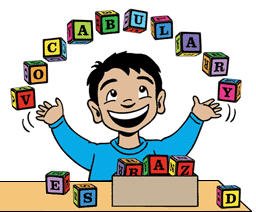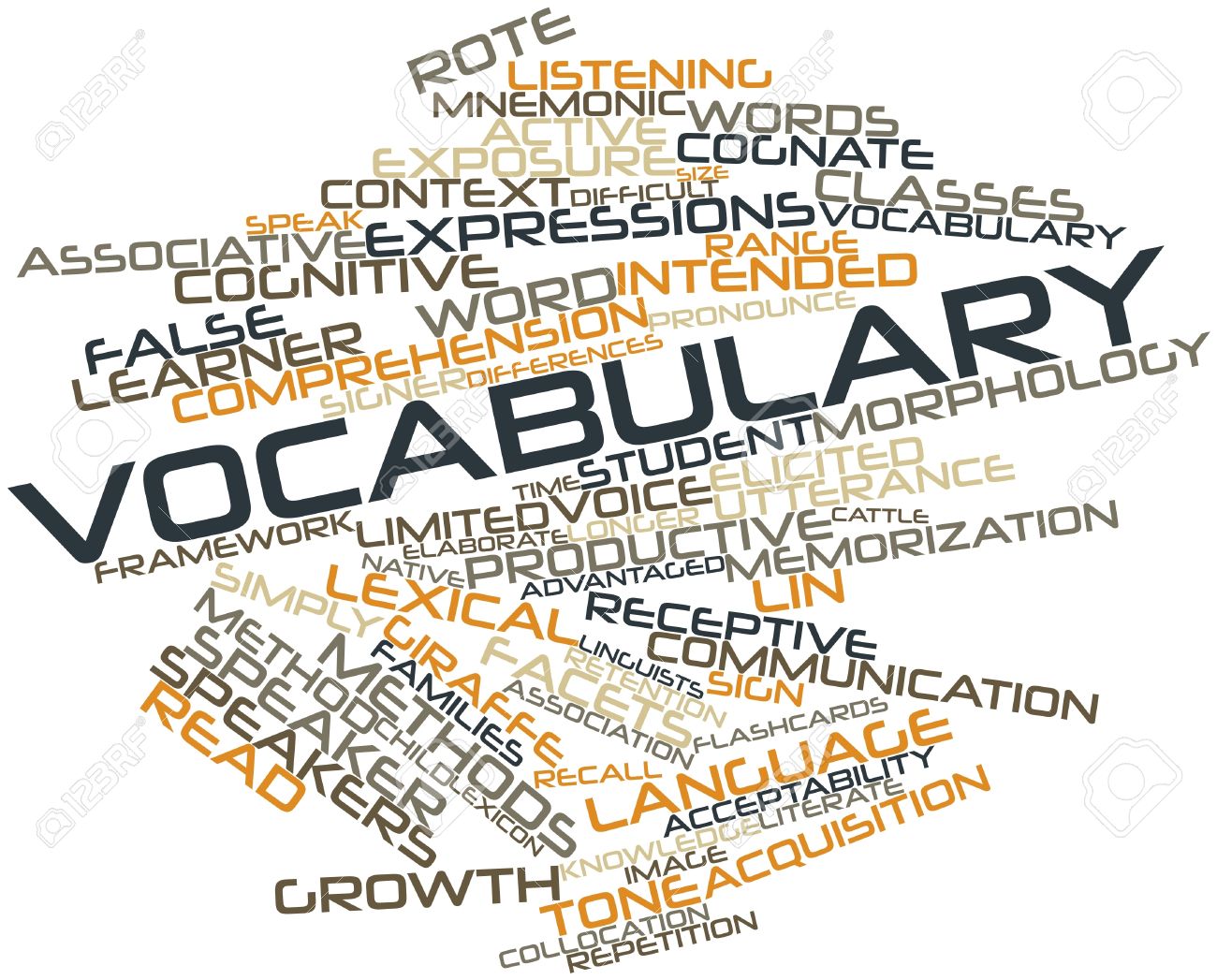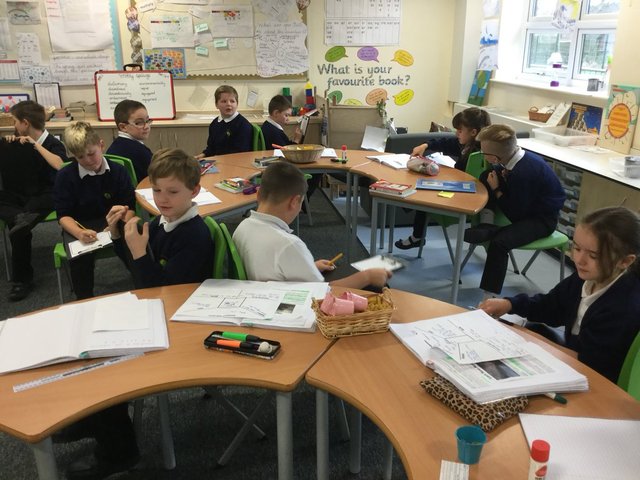VOCABULARY: NEEDED IF MORE CHILDREN ARE TO READ WELL
Vocabulary has long been recognized as a strong determinant of reading success. Despite this realization, not much research has been conducted on the effectiveness of elementary programs that are intended to promote vocabulary knowledge. As a result, it appears that vocabulary growth is largely determined by parental practices, particularly before third grade. In this article, I will out line available information on:individual differences in vocabulary
acquisition, the amount of vocabulary needed for successful reading, how vocabulary is acquired in a predictable sequence, the need for direct instruction in vocabulary, and on some promising methods for promoting vocabulary growth. Much of the argument made in this paper is based on research published in a more technical study in the Journal of Educational Psychology
![]()
(Biemiller & Slonim,2001).In recent years, there have been a growing number of studies
that demonstrate that 1) identifying written words can be success-
fully taught to most children, and 2) that successfully mastering
word identification does not always lead to greater reading com-
prehension for many children.
More than twenty years ago, Becker (1977) noted that teach-
ing disadvantaged children to successfully identify words (i.e., de-
coding) was insufficient to have them reach reading
comprehension beyond grade level two. He noted that disadvan-
taged children’s declining reading comprehension in grades 3 and
4 largely resulted from lack of adequate vocabulary knowledge.
Becker also noted that as a group, the same disadvantaged stu-
dents proved capable of “grade level performance”in mathemat-
ics—a subject in which all necessary information was taught in
school. Thus, lack of learning opportunities, not ability alone, were
the probable cause of the low levels of reading comprehension of
children in Becker’s study.
More than a decade ago, Chall, Jacobs, and Baldwin (1990)
made a similar observation—that disadvantaged students showed
declining reading comprehension as their limited vocabulary came
to constrain comprehension. More recent studies have reported
similar results (Madden, Slavin, Karweit, Dolan, & Wasik, 1993;
Pinnell, Lyons, Deford, Bryk, & Seltzer, 1994). Cunningham and
Stanovich (1997) reported that orally-assessed vocabulary levels in
first grade accounted for 30 percent of reading comprehension
variance as seen in test scores in eleventh grade.
Consistent with these findings, it was found that by third grade,
95 percent of children (in a nonnative sample) could read aloud
more words than they could understand (unpublished finding in
the Biemiller & Slonim, 2001, study. All of this suggests that vo-
cabulary, in addition to word-identification, is a major factor that lim-
its reading comprehension. Similar findings are reported by Becker
(1977), Chall et al. (1991), and Cunningham and Stanovich (1997).
This view is buttressed by many studies that have reported strong
correlations between vocabulary and reading comprehension (e.g.,
Beck & McKeown, 1990). In a recent study, I obtained a correla-
tion of .81 (66% common variance) between oral vocabulary and reading comprehension as assessed by the Canadian Test of Basic
Skills (Hieronymous et al., 1982), across grades one through six.
When a written vocabulary test was used, the correlation with read-
ing comprehension rose to .93 (87%) (Biemiller, 2001a). In short,
simple vocabulary knowledge and word identification skill account
for almost the entire variance seen in reading comprehension.
“Unexplained” variance of 13% is probably due to measurement
error and factors such as reading experience.

What Affects Vocabulary Acquisition?
Is vocabulary simply a measure of some innate capacity of a child,
very much like IQ is thought to be? Certainly “IQ” scores and other
vocabulary scores correlate highly with each other (Knight & Gregg,
2001). However, there is substantial evidence that vocabulary and
comprehension are influenced by both variations in home lan-
guage support and school instruction. This strongly suggests that
vocabulary size is not simply a product of some innate, underlying
capacity.
The Size of Vocabulary to be Acquired
It is estimated that by the end of the elementary years, an average
child has acquired around 9,000 root words.1
This reflects acquiring about 2.2 words per day from age 1 through age 8 (end of
grade two) and 2.4 words per day during ages 9 through 12
(Biemiller & Slonim, 2001). In other words, an average child learns
between 800 and 900 root words a year. This figure is close to the
one obtained by Anglin (1993) even though this figure is substan-
tially lower than the ones reported by Nagy and Herman (1987)
and by Stahl (1999). The Biemiller and Slonim (2001) study men-
tioned earlier used English-speaking children from 3 schools. One
of the three schools had about 40 percent of children from public
housing. Another school served a well-to-do population. The third
school served a more typical middle-class population. Children
were chosen on the basis of their birth dates and gender. Children
with learning disabilities from regular classrooms were also in-
cluded in the study. This meant all the children with learning dis-
abilities, since in the schools investigated, children were not placed
in separate classrooms.
It is well known that there are substantial differences in vo-
cabulary size among children by the end of grade two. In one of
our studies, children from grade two, whose vocabulary size placed
them in the highest quartile, had an average estimated vocabulary
of 7,100 root words. In contrast, children from the lowest quartile
had an average vocabulary size of 3,000 words. Children with the
largest vocabulary had been acquiring over 3 root words per day
since the age of one year; children in the lowest quartile had been
acquiring about 1 word a day. Even by fifth grade, children in the
lowest quartile had not learned 7,100 root words—the level reached
by high-vocabulary children in grade two (Biemiller & Slonim,
2001). This indicates the importance of building vocabulary in
the early years.

Schools and Vocabulary Development
We have seen that acquiring a normal vocabulary is prerequisite
for reading comprehension. The impact of low vocabularies on
reading comprehension only becomes apparent in grades three,
four, and above, when the comprehension of written material be-
gins to exceed many children’s vocabulary (Becker, 1977; Chall &
Conard, 1991: Chall et al., 1990). We have seen that most indi-
vidual differences in vocabulary knowledge develop before grade
three, when there are large differences in rates of word acquisi-
tion (Biemiller & Slonim, 2001). By the end of grade two, chil-
dren in the highest and lowest vocabulary quartiles differ by an
average of 4,000 root words. In our study, the same extent of dif-
ference was seen from grade three through grade six. Unfortu-
nately, slower learners do not “catch up.” If we could avoid the
growing vocabulary gap during kindergarten to grade two, and
possibly fill in some words already missing at the beginning of kindergarten, reading comprehension, perhaps, could be improved.
Thus, vocabulary instruction becomes an important factor in read-
ing instruction for very young children.
Research by Cantalini (1987) and Morrison, Williams, and
Massetti (1998) shows that in primary grades, vocabulary size
varies with age, but not with grade. Consistent with Cantalini’s
and Morrison et al.’s studies, a study of a sample of one-third of
the third-grade children in Ontario in 1997 (N = 32,000) showed
that there is a significant difference in reading comprehension
between children who differ by 9 months in age (Biemiller,
Cantalini-Williams, & Eidlitz, in press). While many teachers
may teach 100 or 200 word meanings in the course of a year,
children need to acquire at least 800 word meanings a year. As
noted above, by the end of second grade, children who have
been acquiring words at the rate of one per day (the lowest
quartile) rather than two per day (the average), are about 2,000
the highest root words behind average children and about 4,000
words behind children in the highest quartile. The low-vocabu-
lary children have not learned many words already known to
average or above-average vocabulary children.

Reading Disabilities and Vocabulary
There is evidence that many children with reading disabilities have
lower-than-average vocabularies. This is due both to the effects of
language problems (e.g., Gathercole, Hitch, Service, & Martin,
1997; Scarborough, 2001), and limited exposure to print, particu-
larly that of older children. It has to be noted that Becker (1977) and Chall et al. (1990) have noted that reading “problems” can
occur in children with adequate word identification skills but lim-
ited vocabulary.

Need for a Teacher-Centered Approach to Building Vocabulary
During the past ten years, there has been increasing emphasis on
teacher-directed instruction in word-identification skills. However,
relatively less attention is given to research on the outcome of
teacher-directed vocabulary instruction. There is evidence that read-
ing books orally to children several times and explaining 5–10 word
meanings while reading can be effective with primary level children.
(See Biemiller, in press). For older children, this should also in-
clude morphological analysis which will require a program com-
ponent on vocabulary.
I suggest that primary-grade teachers devote at least half an
hour a day to developing vocabulary because building vocabulary
is as important as learning to identify printed words. Suggestions
for incorporating vocabulary instruction in school programs are
described in Language and Reading Success (Biemiller, 1999b).
Vocabulary learning differs in several crucial ways from learn-
ing other reading-related skills. There are some crucial but lim-
ited sets of literacy skills that, once learned, can be used throughout
life. These include word identification (phonemic awareness plus
decoding), morphological analysis (applying knowledge of suffixes
and prefixes to extend word knowledge), and simple dictionary
skills. Unlike phonics and other literacy skills, building basic root
word vocabulary requires continuing support, especially for less
advantaged and lower-vocabulary children. If we are to increase
vocabulary knowledge of children, there must be an ongoing ef-
fort to introduce and explain new vocabulary, from kindergarten
at least through grade six. Unlike phonics and morphological analy-
sis, both of which can be taught in two or three years, vocabulary
instruction is a never-ending effort.
Vocabulary instruction can occur both through direct explana-
tion of words (words encountered in oral and printed text and
making them meaningful); and in response to questions about words,
and through use of dictionaries and computerized data bases.
Simple provision of narrative or expository texts with explanation of 8 or 10 words per reading can be sufficient for children at all
vocabulary levels to gain two or more new words per session.
Note:
- Actually, this refers to acquiring 9,000 root word meanings, In the Living Word Vocabu-
lary, there is more than one meaning associated with a root word form. - The situation of second-language children may be somewhat different. If these chil-
dren have a large vocabulary in their first language, acquiring vocabulary in the sec-
ond language is probably faster. However, I have found an average two-grade deficit in
many second-language children by the time they reach the fifth and sixth grades
(Biemiller, 1999a). - There will be some words at every level which are archaic. Teachers can omit such words.
All img collected from google.com
Why I share this article in steemit?
This article is very much needed to read for men.When I read this article in book I very much excited about it.It pleasured me much & hope that you will also.So please read this article for you & for your child.
Source of this article.
https://www.pdfdrive.net/read-article-d29604878.html
www.tandfonline.com/doi/abs/10.1080/02702710390227297?journalCode=urpy20
More to here
https://www.vocabulary.com

This post has received a 2.00 % upvote from @aafrin
Congratulations @steemjeet! You have completed some achievement on Steemit and have been rewarded with new badge(s) :
Click on any badge to view your own Board of Honor on SteemitBoard.
For more information about SteemitBoard, click here
If you no longer want to receive notifications, reply to this comment with the word
STOP